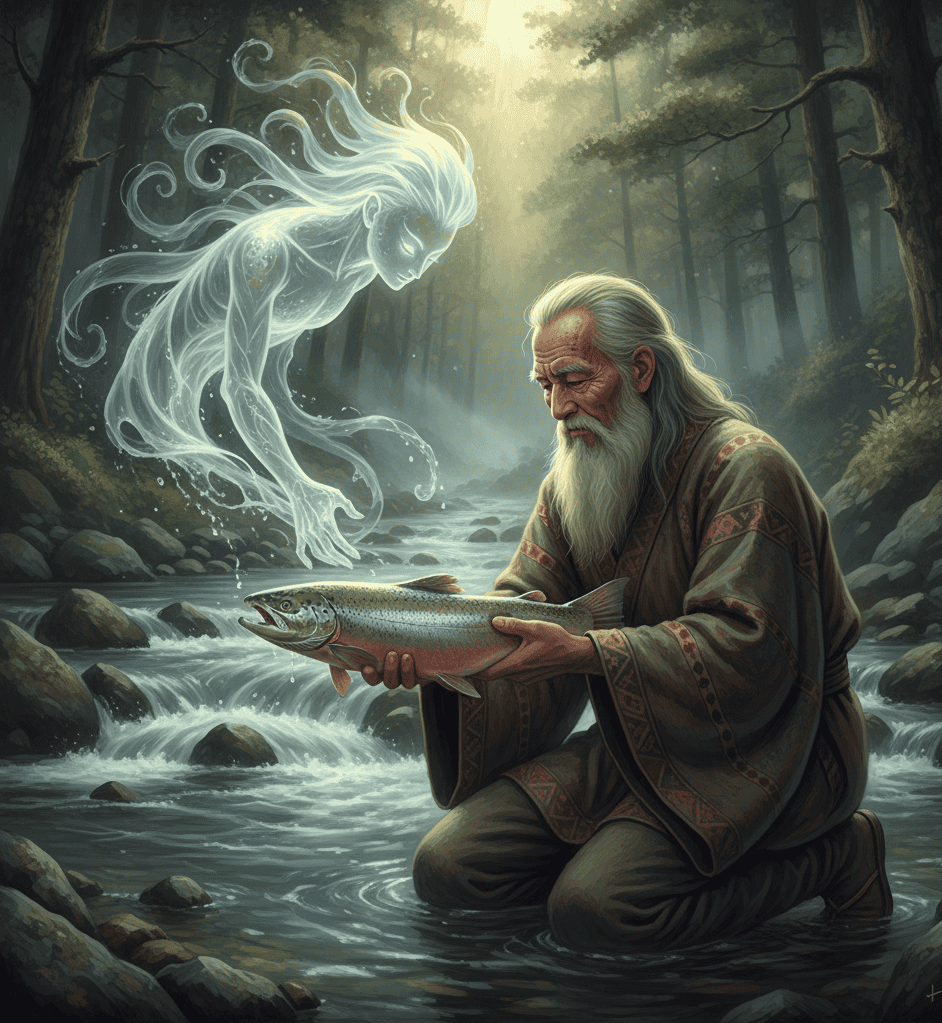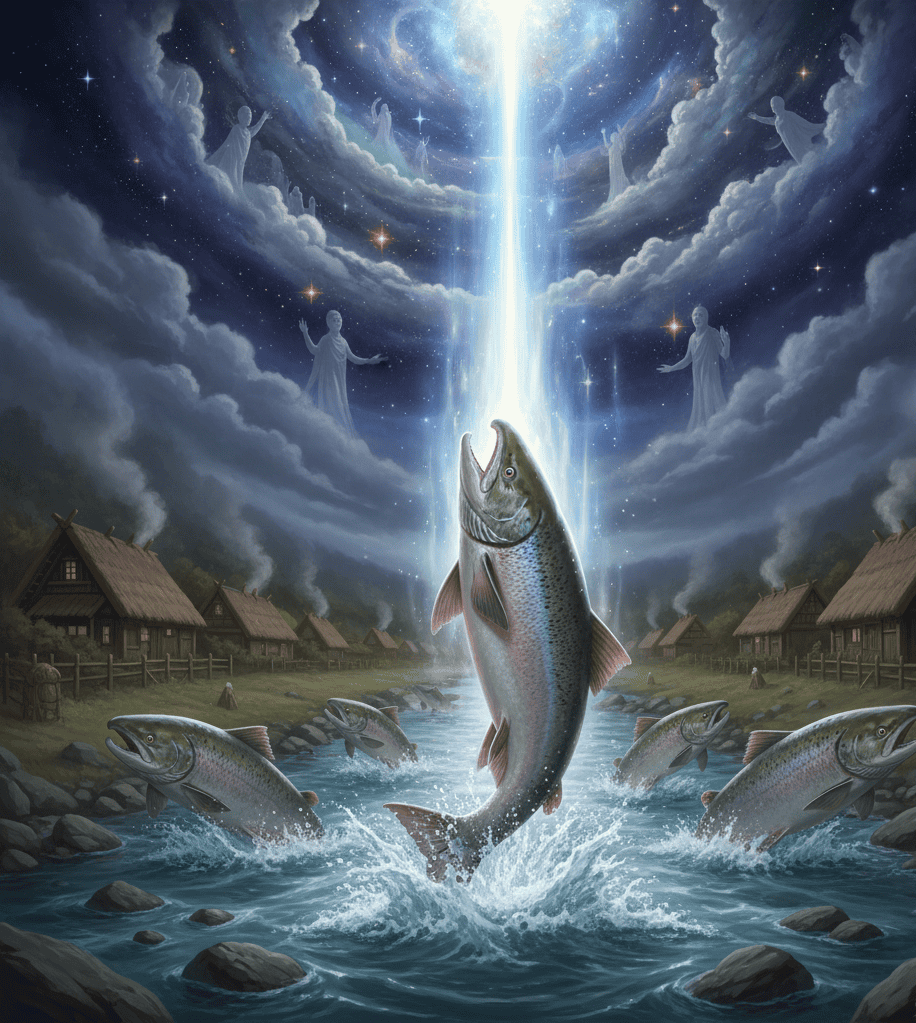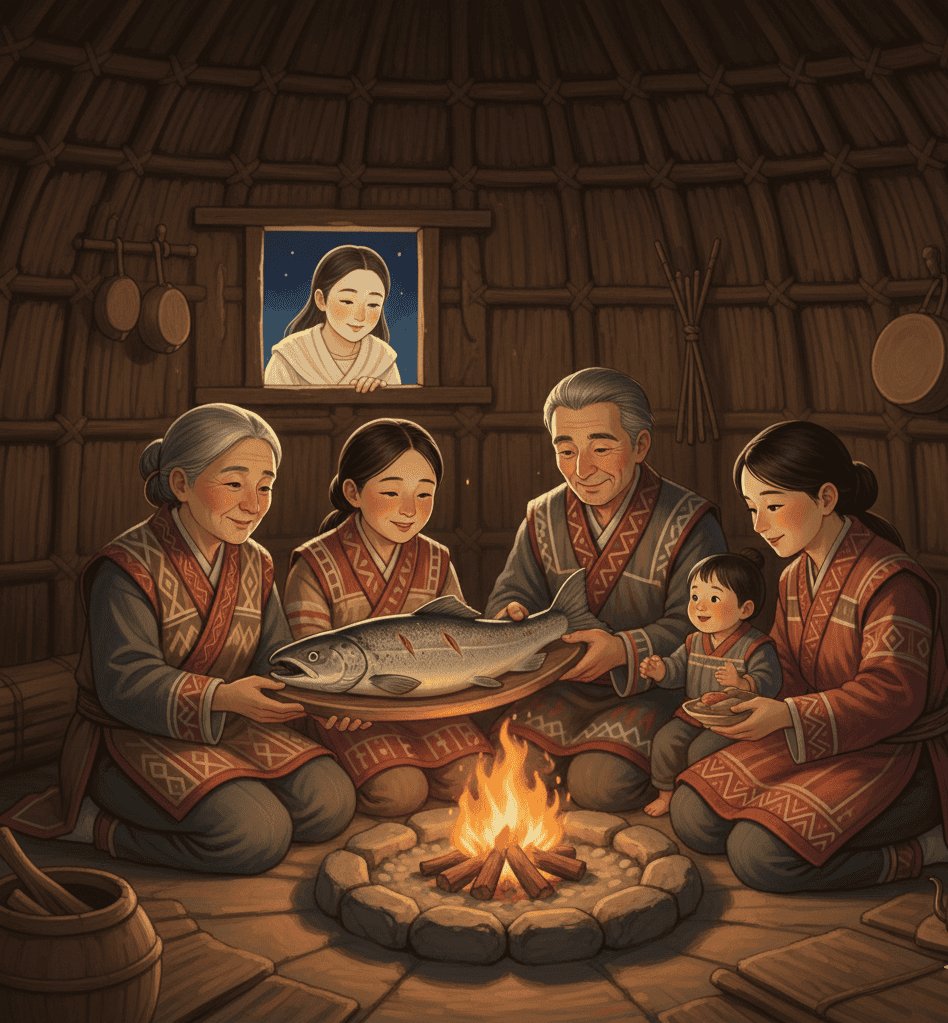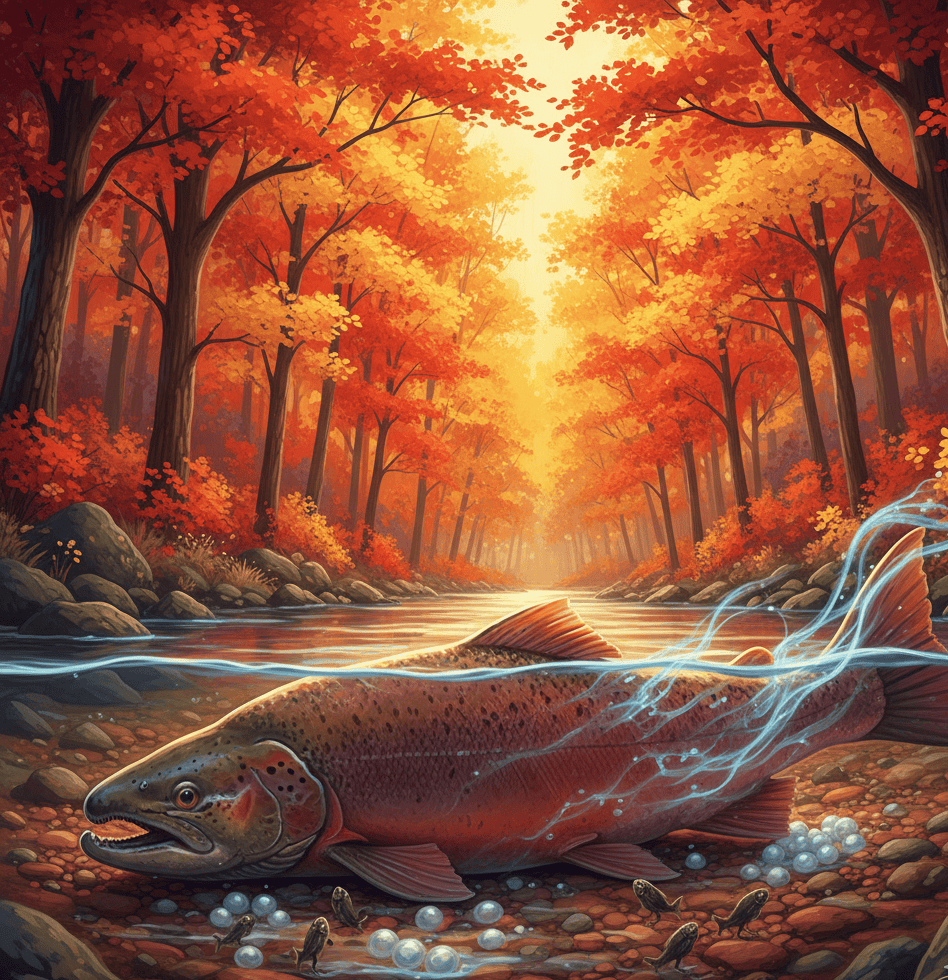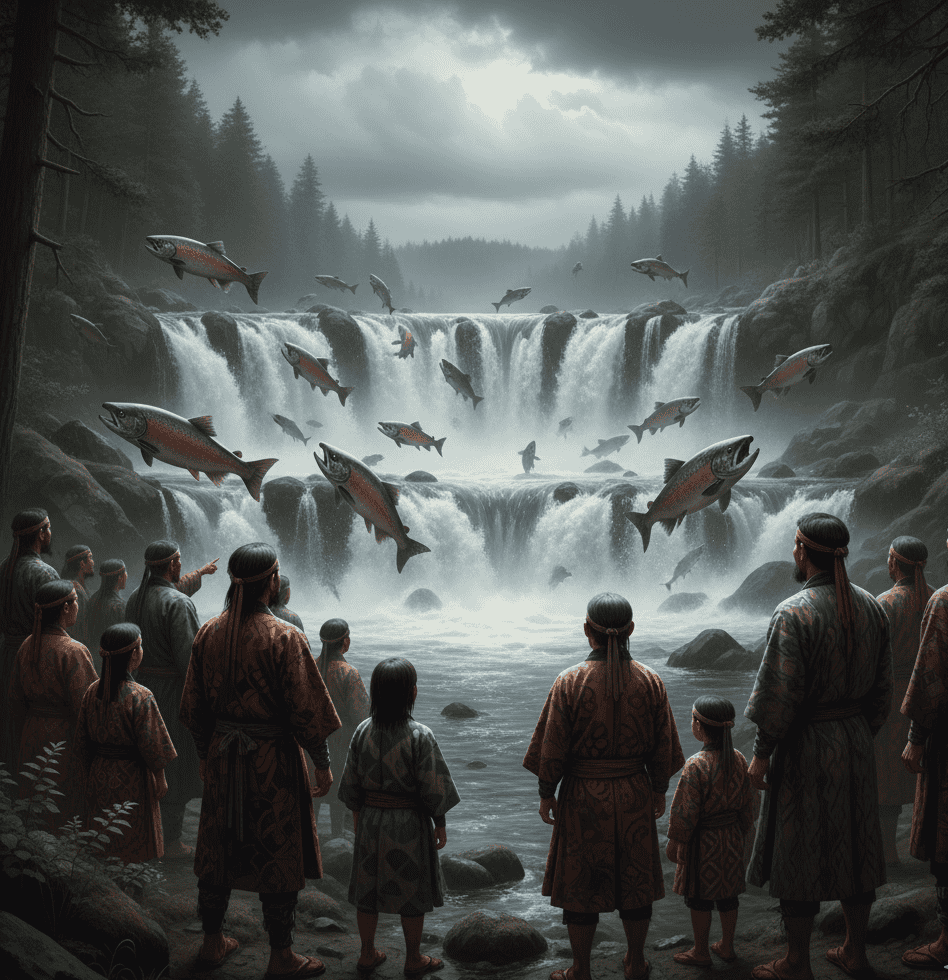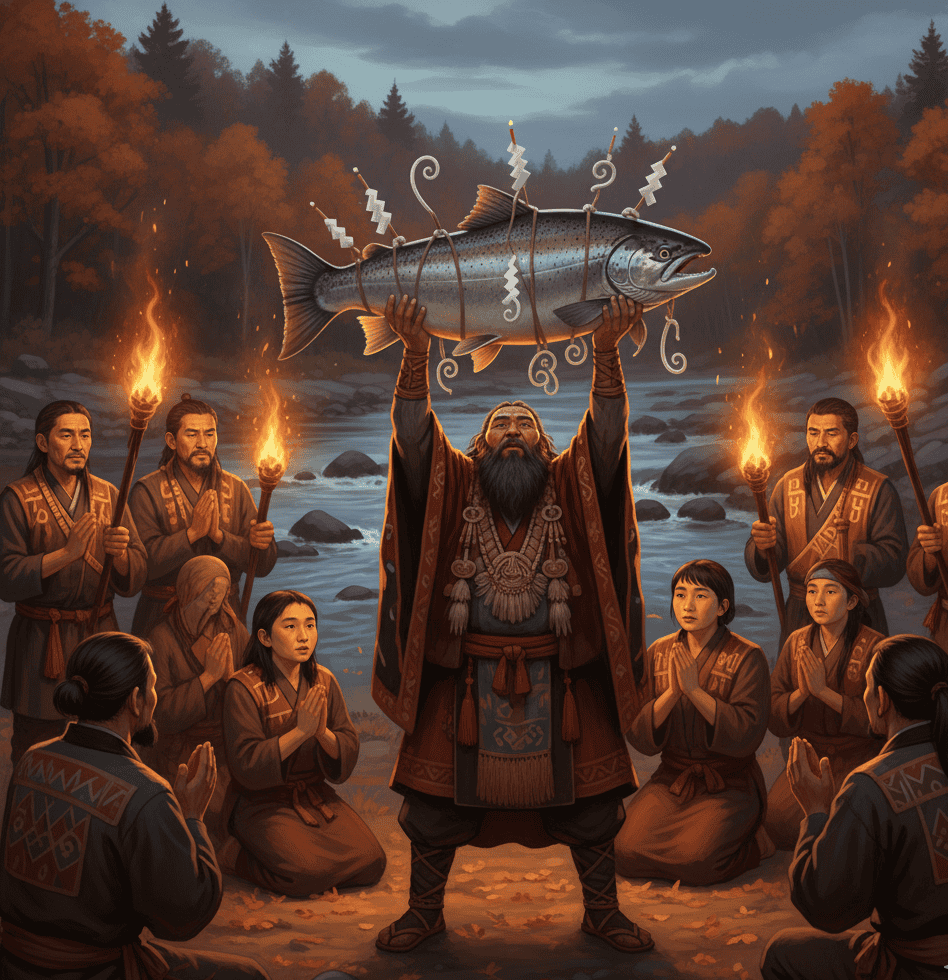For the Ainu people of northern Japan, salmon was never just a source of food. It was a sacred gift from the kamuy, the divine spirits who ruled over the natural world.
Each year, when salmon swam upstream in great numbers, the Ainu welcomed them with deep respect and rituals of gratitude.
Salmon was believed to carry messages between humans and gods, bringing blessings and balance to life.
Here are seven myths and stories that reveal why the salmon holds such a sacred place in Ainu tradition.
1. Salmon As A Gift From The River Kamuy
In Ainu belief, every part of nature is alive with spirit, and rivers are no exception. The river Kamuy was thought to send salmon upstream each autumn as an offering to humans.
When the fish arrived, families would hold rituals, thanking the river for its generosity.
The story goes that the kamuy allowed salmon to leave the divine realm and take on earthly form so humans could survive the harsh winters.
But the gift came with responsibility. If people wasted salmon or disrespected it, the river spirit would take offense and withhold the fish the following year.
This myth explained the rhythm of the salmon runs and reminded people that respect for nature was the key to survival.
2. The Salmon As A Messenger Between Worlds
One story describes salmon as travelers who move between the world of humans and the realm of the kamuy. When they swim upstream, they bring divine energy into human rivers and lakes.
When they return to the sea, they carry back the prayers and gratitude of the Ainu to the gods.
This belief gave every salmon a sacred role. It was not only food but also a living messenger.
By treating the salmon with care, people believed their voices would be heard by the spirits, ensuring health, safety, and balance in the seasons to come.
In this way, catching and eating salmon was not an act of taking, but of participating in a cycle of exchange with the divine.
3. The Salmon As A Spirit In Disguise
Another Ainu myth tells of a kamuy who once took the form of a salmon to test the kindness of humans. The spirit swam upstream and allowed itself to be caught by a poor family who had little to eat.
Instead of hoarding the fish for themselves, the family shared it with their neighbors.
That night, the salmon transformed back into its true divine form and appeared in their dreams, blessing them with abundance.
From then on, salmon was seen as a possible disguise of the gods themselves. Each fish carried the chance that a divine spirit might be watching, judging how humans behaved.
This belief encouraged generosity and respect not only toward the salmon but toward one another.
4. Salmon And The Cycle Of Life
The Ainu observed how salmon returned to the rivers of their birth to lay eggs before dying. This life cycle was woven into myth as a sacred teaching.
Salmon were believed to embody the eternal rhythm of death and renewal.
Stories said the kamuy had chosen salmon to remind humans that endings always carry the seed of new beginnings.
Just as the salmon died to ensure new generations, people too were part of a greater cycle where life fed life.
Eating salmon was not only nourishment. It was a reminder that every gift came from sacrifice, and that survival was tied to honoring the cycles of nature.
5. The Salmon Bride Myth
A well-known Ainu tale speaks of a man who married a beautiful woman who appeared one autumn by the river.
She was gentle and wise, but she warned her husband never to follow her when she went to bathe.
One day, curiosity overcame him. He spied on her and discovered she had transformed into a salmon in the water.
Ashamed that her secret was revealed, she returned to the river and swam away, never to be seen again.
This myth showed that salmon were not only food but beings that could take human form. They were linked to love, loyalty, and mystery.
It reminded the Ainu that salmon existed in both the human and spirit world, and that breaking trust with them could bring sorrow.
6. The Salmon As A Divine Teacher
Another story tells of a time when humans forgot how to live in harmony with the seasons. They wasted food, polluted the rivers, and angered the spirits. The kamuy sent salmon to teach them balance.
The salmon showed that by swimming together, they could overcome obstacles, leaping up waterfalls and enduring great journeys to return home.
Their perseverance became a lesson for humans to endure hardships with strength and unity.
In this myth, the salmon was more than a creature. It was a teacher who revealed spiritual truths.
The annual salmon run was like a living sermon from the gods, reminding people of endurance, patience, and the importance of returning to one’s roots.
7. Salmon And The First Ceremony Of Autumn
The most sacred salmon myth connects to the annual iomante rituals, where spirits were honored and returned to the divine world.
At the start of the salmon run, the first fish caught was treated with great reverence.
According to myth, this first salmon carried the spirit of a kamuy who had chosen to visit the human world.
The fish was offered prayers, decorated with sacred inau sticks, and sometimes returned to the river to carry the message of gratitude back to the gods.
By honoring the first salmon, the Ainu ensured that the rest of the run would be plentiful.
It was a way of sealing the sacred bond between humans and the divine world, a reminder that each gift of nature was part of a greater spiritual relationship.

自出生以来,我一直感觉到自己与神灵有着紧密的联系。作为一名作家和导师,我的使命是帮助他人在最黑暗的时刻找到爱、幸福和内心的力量。


